The perfect pork sausage seasoning ratio is 1.5%-2% salt, 0.6%-1% black pepper, and 0.4%-0.8% garlic powder by total meat weight, adjusted for fat content. For a standard 1kg batch of pork with 20% fat, this equals 14g salt, 6g pepper, and 6g garlic powder. This science-backed ratio ensures optimal flavor extraction, proper binding, and balanced taste in every batch—no more bland or overpowering results.
Table of Contents
- Why Precise Sausage Seasoning Ratios Matter
- Core Seasoning Components and Their Scientific Roles
- The Chemistry of Flavor Activation in Sausage
- Adaptive Ratio Calculator for Any Pork Batch
- Classic and Global Flavor Formulations
- Professional Seasoning Techniques for Home Cooks
- Troubleshooting Common Seasoning Problems
Why Precise Sausage Seasoning Ratios Matter
Accurate sausage seasoning measurements transform inconsistent results into culinary success. Unlike baking, where volume measurements suffice, sausage requires weight-based precision due to meat's variable composition. The critical reasons include:
- Binding Chemistry: Salt at 1.5-2% extracts myosin proteins that bind meat particles and trap moisture
- Fat Interaction: Spices distribute unevenly in fatty matrices—requiring adjustments per fat percentage
- Flavor Thresholds: Human taste receptors detect salt at 0.8% concentration; below this threshold, sausage tastes bland regardless of other spices
Core Seasoning Components and Their Scientific Roles
Understanding each component's biochemical function explains why ratios matter more than ingredients alone:
| Spice Component | Optimal Concentration Range | Scientific Function |
|---|---|---|
| Salt (NaCl) | 1.5%-2% of total meat weight | Dissolves myosin for binding; activates umami receptors; reduces water activity |
| Black Pepper | 40%-50% of salt weight | Piperine enhances absorption of other compounds; stimulates saliva production |
| Garlic Powder | 0.4%-0.8% of total meat weight | Alliinase enzymes form allicin for complex savory notes when hydrated |
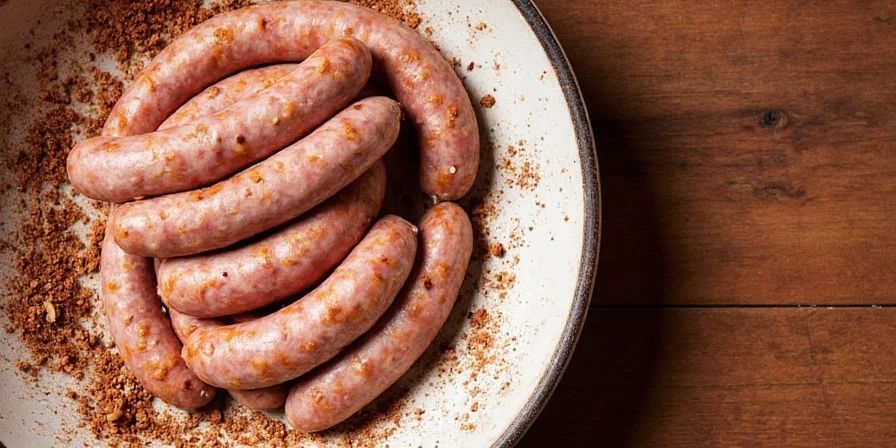
The Chemistry of Flavor Activation in Sausage
Successful seasoning depends on understanding protein chemistry. When salt contacts meat, it solubilizes myosin—a structural protein that creates a sticky binder trapping moisture and distributing spices evenly. This explains why volume measurements fail: fat content directly impacts solubility. For every 5% increase in fat, reduce salt by 0.1% to maintain ionic balance. Acid components (like vinegar) lower pH to optimize myosin extraction, while sugar counters bitterness from over-extraction. These biochemical reactions transform random seasoning into precision craftsmanship.
Adaptive Ratio Calculator for Any Pork Batch
Professional results require adjustments based on your specific meat composition. Follow this evidence-based formula:
Scientific Ratio Formula:
- Salt: 1.5%–2% of total meat weight (decrease 0.1% per 5% fat increase)
- Pepper: 40–50% of salt weight
- Garlic: 0.4%–0.8% of total meat weight
Practical Calculation: For 1 kg (1000g) pork with 25% fat
| Component | Calculated Amount (grams) | Scientific Adjustment Reason |
|---|---|---|
| Salt | 13.5g | 25% fat requires 0.5% reduction from base 2% |
| Black Pepper | 6g | Maintains 44% ratio to salt for balanced heat |
| Garlic Powder | 7g | Slightly increased to compensate for fat dilution |
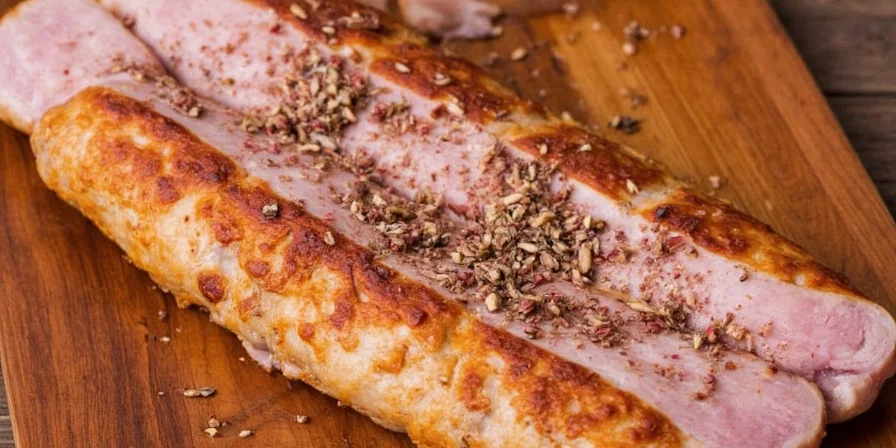
Classic and Global Flavor Formulations
Regional variations work because they align with biochemical principles:
Traditional European Profiles
- Fennel: Anethole compounds bind to fat, releasing slowly during cooking (use 0.5%-1% weight)
- Sage: Carnosic acid prevents lipid oxidation in fatty cuts (0.3%-0.6% weight)
- Nutmeg: Myristicin enhances salt perception without increasing sodium (0.1%-0.2% weight)
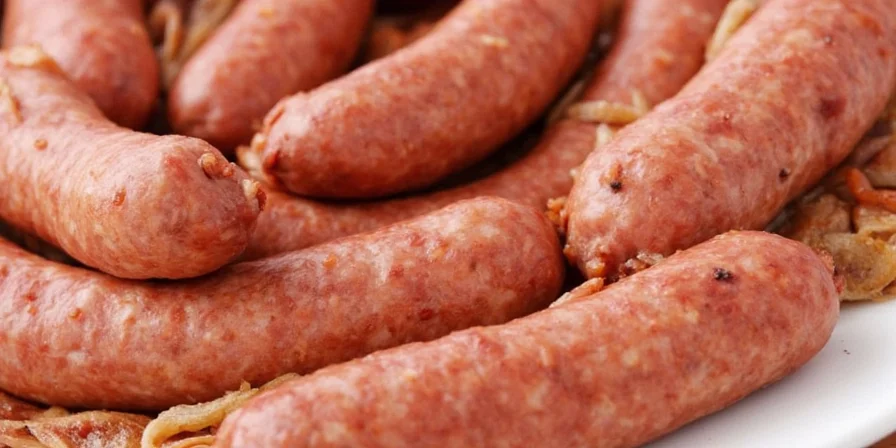
Global Fusion Variations
- Mexican Chorizo: Cumin's cuminaldehyde reacts with pork fats at 0.4% concentration for optimal smokiness
- Asian-Inspired: Fresh ginger at 1.5% breaks down during mixing for even heat distribution
- Southern-Style: Capsaicin from cayenne (0.25%) binds to fat for sustained heat release
- Middle Eastern: Turmeric (0.3%) requires fat for curcumin bioavailability

Professional Seasoning Techniques for Home Cooks
- Cold Mixing Protocol: Chill meat, spices, and equipment below 4°C (40°F) to prevent premature protein denaturation
- Hydration Method: Mix dry spices with 1 tsp oil per 500g meat to activate lipophilic compounds before adding to meat
- Extraction Test: Squeeze a small patty—if liquid pools, fat ratio is off (ideal binding shows minimal seepage)
- Sequential Addition: Add salt first, mix 2 minutes, then add other spices to optimize myosin extraction
- Resting Period: Allow seasoned meat to rest 15 minutes before casing for optimal flavor integration
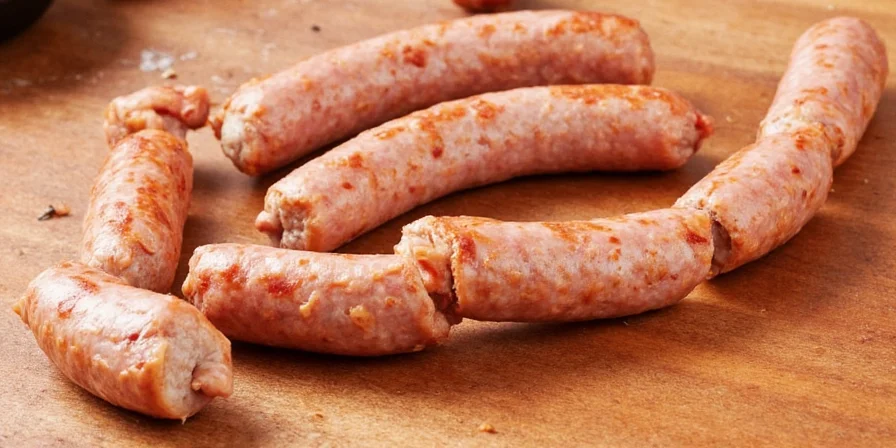
Troubleshooting Common Seasoning Problems
Solve issues using food science principles rather than guesswork:
| Common Problem | Scientific Cause | Exact Fix (per 1kg batch) |
|---|---|---|
| Bland flavor despite proper ratios | Insufficient salt for myosin extraction | Add 3g salt dissolved in 10g ice water |
| Overly salty after cooking | High-temperature mixing accelerated extraction | Mix with 100g unsalted pork fat and 3g sugar |
| Inconsistent heat distribution | Poor capsaicin distribution in fat matrix | Add 20g oil-infused spice paste before final mix |
| Mushy texture with poor bite | Excessive acid denatured proteins prematurely | Increase salt by 2g and reduce mixing time by 30 seconds |
Advanced Flavor Balancing Technique
Counteract pork's richness through controlled Maillard reactions: add 5g dextrose to promote browning without sweetness, and 3g citric acid solution to enhance volatile aroma compounds during cooking. This creates perceived complexity without altering raw seasoning balance—ideal for competition-level sausages.
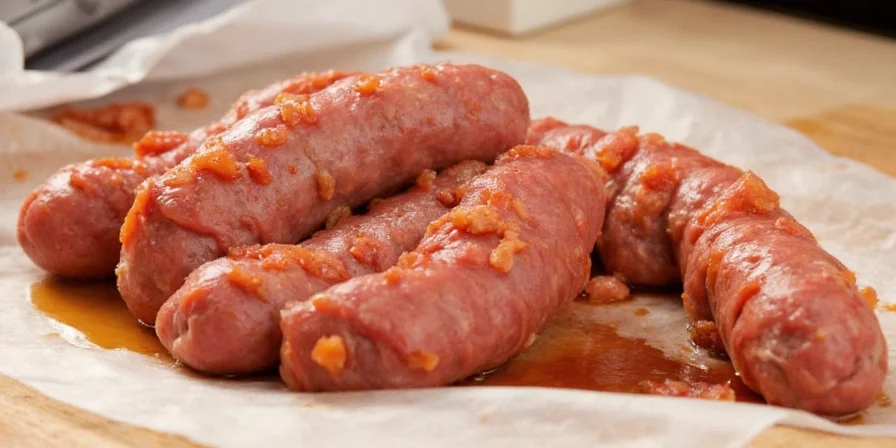
Frequently Asked Questions
How much salt per pound for perfect sausage?
Use 0.75-1 teaspoon (4.5-6g) of fine salt per pound (454g) of pork. For coarse salt, increase by 20% due to density differences. Adjust down 0.1g per additional 5% fat content.
Why does my sausage seasoning taste uneven?
Uneven distribution occurs when spices aren't properly hydrated. Mix dry spices with 1 teaspoon oil per 500g meat before adding to cold meat. Mix sequentially: salt first for 2 minutes, then other spices for 1 minute.
How to fix bland sausage after mixing?
Dissolve additional seasoning in ice water (10g water per 1000g meat) to facilitate absorption. For 1kg batch: add 3g salt, 1.5g pepper, and 2g garlic powder dissolved in cold water, then mix 30 seconds.
What's the ideal pepper to salt ratio for sausage?
The scientific ideal is 40-50% by weight (e.g., 6g pepper to 14g salt). This maintains flavor balance without overwhelming heat. For spicier profiles, increase to 60% but compensate with 0.2% additional sugar.
Conclusion
Perfect pork sausage seasoning combines precise chemistry with practical technique. By understanding the scientific relationship between meat composition and spice compounds, you transform random experimentation into consistent excellence. Whether crafting traditional bratwurst or innovative fusion blends, these evidence-based ratios and techniques ensure professional results every time. The key insight: sausage perfection depends not on exotic ingredients but on disciplined application of fundamental principles. Implement these science-backed methods and create sausages that consistently deliver balanced flavor, perfect texture, and culinary satisfaction.

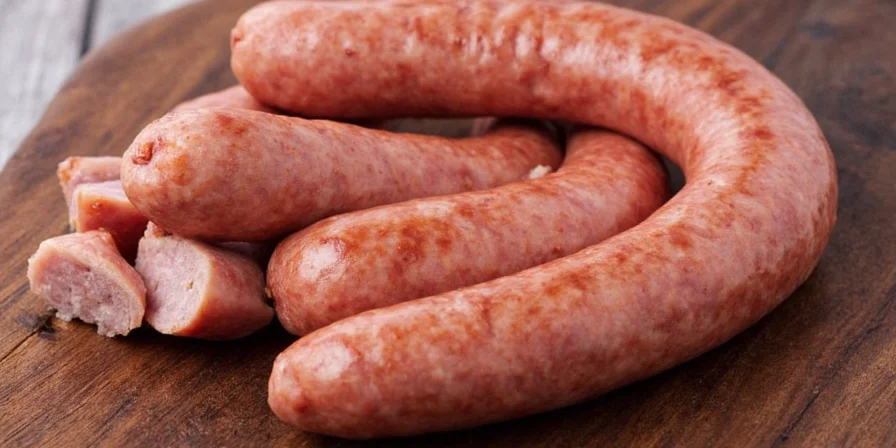









 浙公网安备
33010002000092号
浙公网安备
33010002000092号 浙B2-20120091-4
浙B2-20120091-4